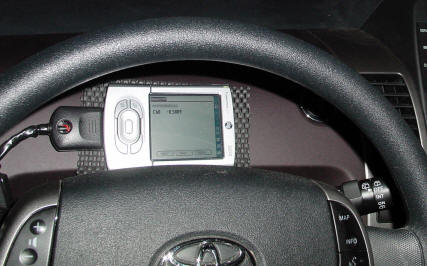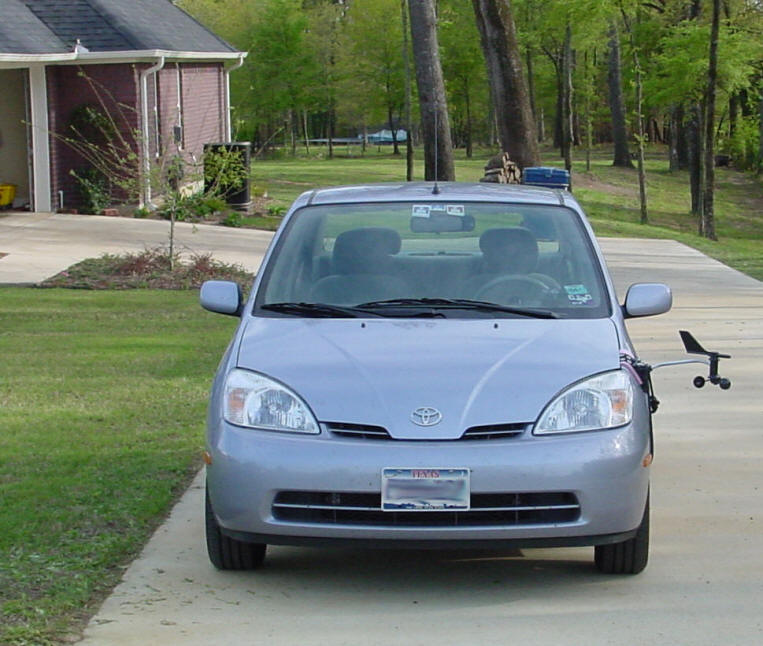
Photo below shows the first Prius I used to collect aerodynamic data & why some folks thought I was a Storm Chaser.

Some of the instrumentation that was inside this first Prius that helped collect aerodynamic data.
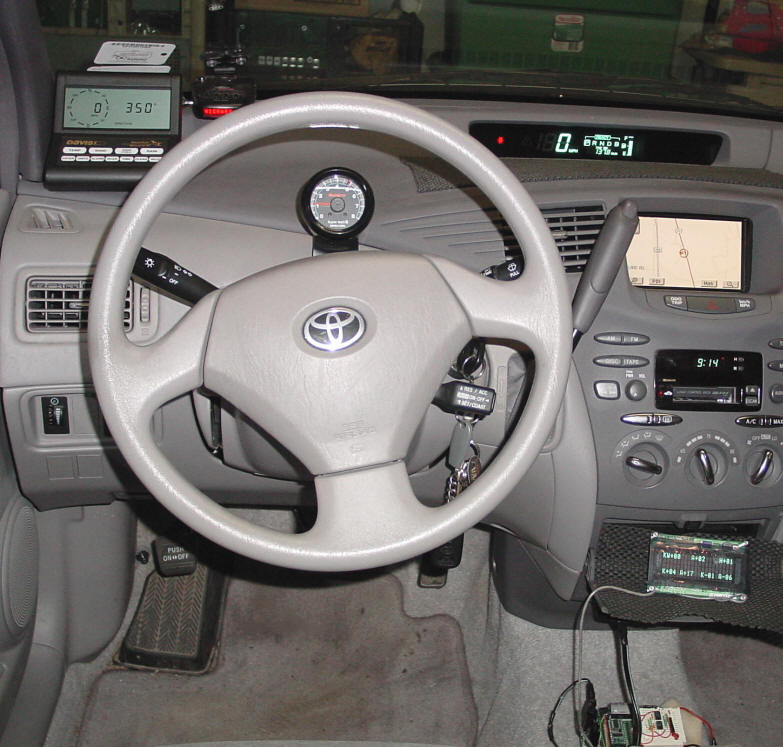
Here is some the very first work I did adding an extra 27Ah to my 2002 Prius. This was tricky because of needing to massage the HV Batt ECU data that was going to the HV ECU. This photo shows the Pb-A or Lead/Acid batteries I used. I ran this assembly for about 36,000 miles until I bought a 2004 Prius.
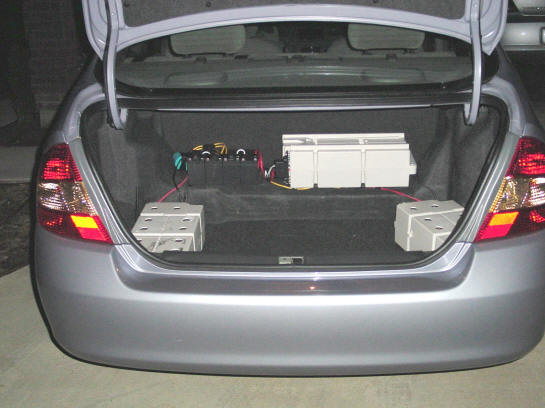
In late 2003 I finally got around to seeing what was under my new 2004's hood ... well, the back floor that is.
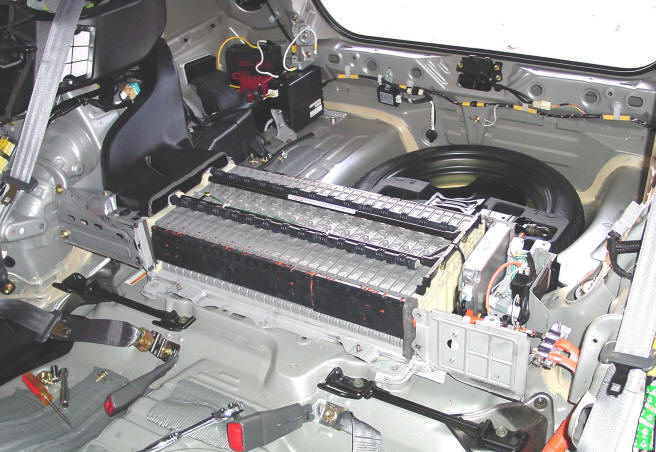
The PbA system out of the 2002 installed in the 2004 and on display in Orlando @ a Prius meet.
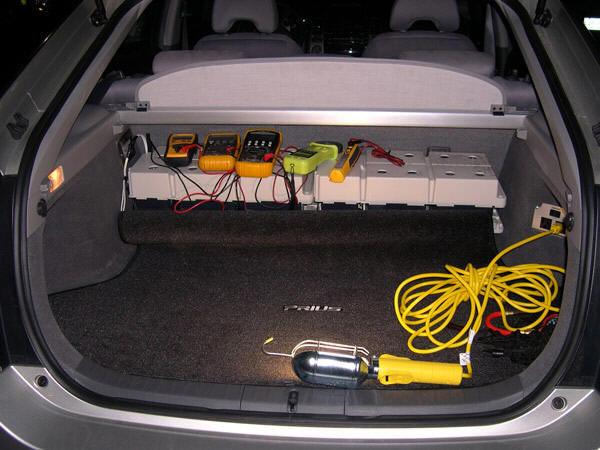
Just a few weeks later I had gotten hold of 2002 Prius battery which ran at 300 Volts so I had to take off 10 modules, cut the box, rewire the buss bars, rewire SMR1 & SMR2 and redo the cooling. I had decided to do a PbA & NiMH install with some unusual logic to control it all & it worked! See the next photos.
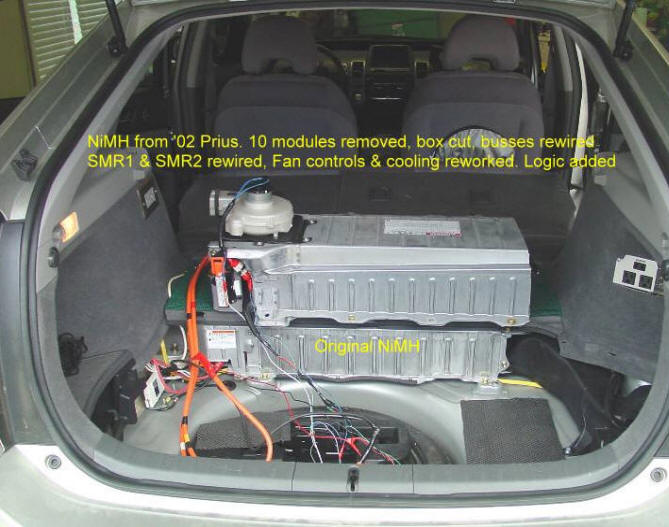
Playing around with different configurations.
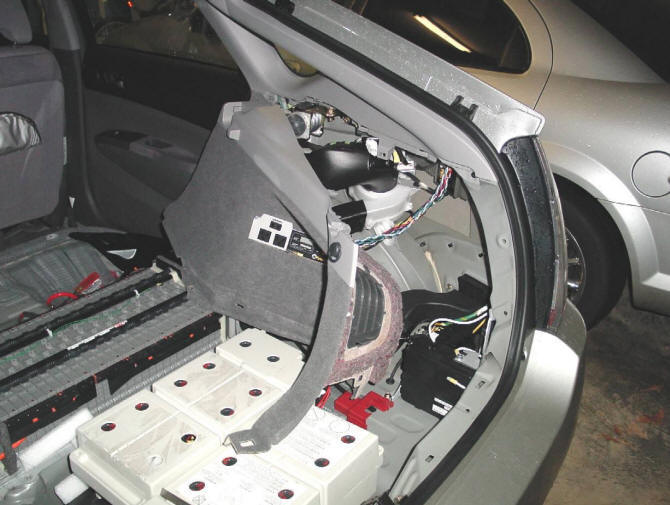
And finally, I drove on this configuration until I had about 28,000 miles & got some really nice MPG figures. Then I started working on my own NiMH arrays.

Prototyping a 206 Volt DC, 3Ah NiMH array for the 2004 Prius system show
n below. Dan Kroushl, from Pittsburgh, PA, the leader of the famous 'Prius Marathoners,' introduced to me the possibility of using relatively low cost NIMH cells. I even named them D-Packs or Dan-Packs in his honor. Read Toyota's article on the famous 'Prius Marathoners' here: http://www.toyota.com/html/hybridsynergyview/2005/fall/marathon.html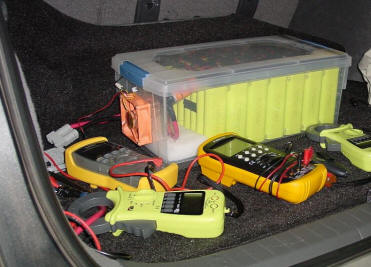
Maiden Voyage photo of the system when I had the first 6Ah of the final design installed.
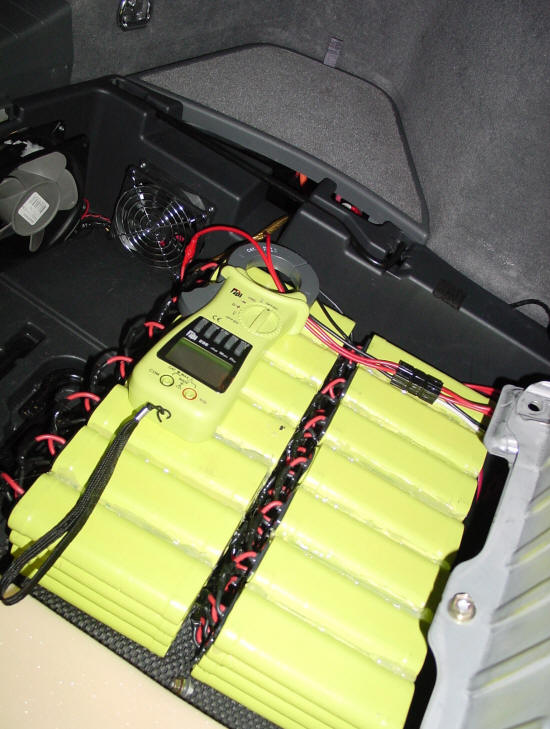
Here's the Backend of the 2004 showing 18Ah of the NiMH array with the regular luggage floor cover off to reveal them. If you look in the back of my Prius now, it looks completely stock. The 6.5Ah OEM NiMH battery sits just in front of this array, giving me a total of 24.5Ah of battery in this Prius. I have 155,000+ miles on this car & 125,000+ of those miles I have had this 18Ah NiMH array. There has never been a single event and I am enjoying incredibly great mileage. The capacitor bank sits in the left backside area under the cover & you can see the large red cable going to that array. Notice the 110Volt AC outlet on the upper-left wheel-well; that has come in handy through several power outages. Many of our neighbors have actually come over to see why we always have electricity in our home during the outages.
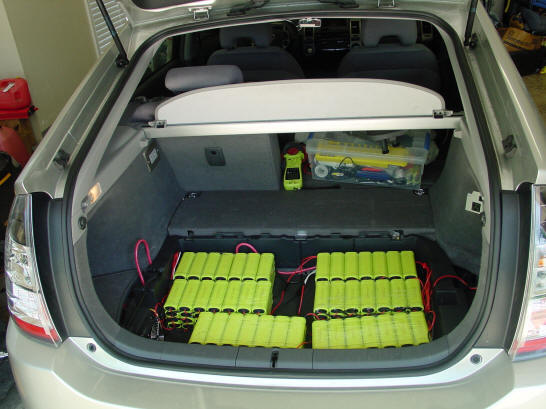
A shot from another angle showing one of several thermostatically controlled fans controlling temperatures for the array. Those fans can push an awful lot of interior air through that array if they need to. NiMH batteries perform best in temperatures that humans too consider comfortable. A lot of naysayers predicted that this array would fail before 2,000 miles. I recently performed a pretty thorough diagnosis on these and the OEM battery and all 'spec'd' well within new condition. So much for those predictions guys. Again, this car has 155,000+ miles and the yellow 18Ah array has 125,000+ miles on it. Keeping the SOC regimen under tight control and the temperature where it belongs provides very long battery life. I expect now to get more than 300,000 miles out of this system.
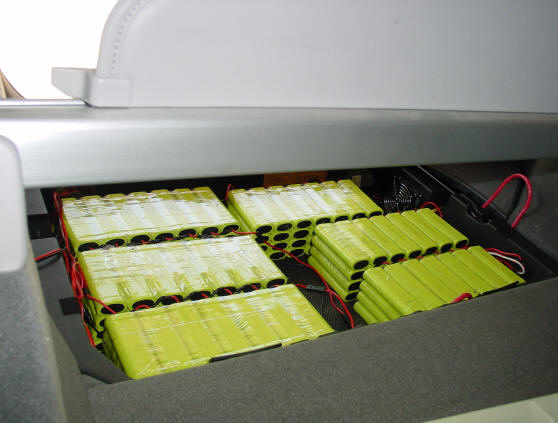
A little bit of careful driving & 18 extra Ah of Battery provides this kind mileage for me quite often.
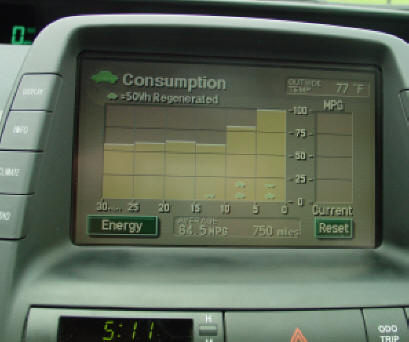
I know a lot of people can get this kind of mileage without extra batteries but, I don't have the patience to go the slow speeds required to do that ... Yet! If we can keep the contests down to 50 miles, I can get great mileage & that is exactly why PHEV (Plug In Electric Hybrid Vehicles), being spearheaded by Felix Kramer is getting a lot of attention lately & rightly so. A very good place to begin learning more about PHEVs is @ http://www.calcars.org/priusplus.html . You can read even more about Felix Kramer's efforts with PHEVs at the following URLs:
Felix Kramer fkramer@calcars.org
Early in 2004, when I had finished assembling the NiMH array, a friend & I put the whole array in the spare-tire wheel-well and you can see for yourself, 18Ah & more can fit down there. I didn't leave it there because I was worried about proper cooling. Come on Toyota, give us a factory PHEV PLEASE! .... And when you do that for us, please add G2V (Grid to Vehicle) & V2G (Vehicle to Grid) capability and while I am asking for things; please go ahead and put the terrain following program in the Nav based HV ECU that you have been working on. We Prius Pioneers will test it and spread the good news quickly just like we have done since you first started providing us with our very futuristic machines! Toyota really does have some very wonderful things in store for our near future. Toyota, you are an Inspiration!

Here is a photo I published in late 2003 of my early tie-in work. I no longer use this kind of tie-in and currently use more microprocessors than I did in this early work. Toyota put a CAN network in the 2004 Prius and that had a bunch of us scrambling for quite some time trying to figure out what those new weird CAN signals meant. I am leaving this photo 'too small to read' so that Toyota doesn't get upset with me and so no one gets hurt; it is just here for the history now, it is no longer useful.

With all that extra Ah of battery, your EV mode distances can get rather lengthy. The system doesn't provide lubrication to the planetary gear system during 'EV mode' or 'Stealth Mode' and that is partially why Toyota doesn't allow us very much EV time. Oil inside the hybrid drive housing (transaxle) splash lubricates the bearings, gears, and other moving parts while the ICE powered transaxle-oil pump (not the ICE oil pump) supplies lubricating oil to the planetary gear system. I bought this pump to fit to the HSD and I know where I need to tie in but, after 155,000+ miles, I still haven't done it so, I have had to limit my 'EV' events to 7 miles and then force a startup so that those few parts can be lubricated. I
need to install this thing & see how much real EV time or distance I can muster within my SOC range.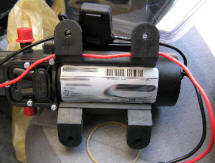
In mid 2004, I started using Bluetooth data logging equipment in the back and could switch through several screens that I had programmed on my Palm T3 shown below to monitor what the Prius was doing. Technology is making pretty sophisticated tools & work easier & easier for us 'Garage Hacks' to implement all the time.
